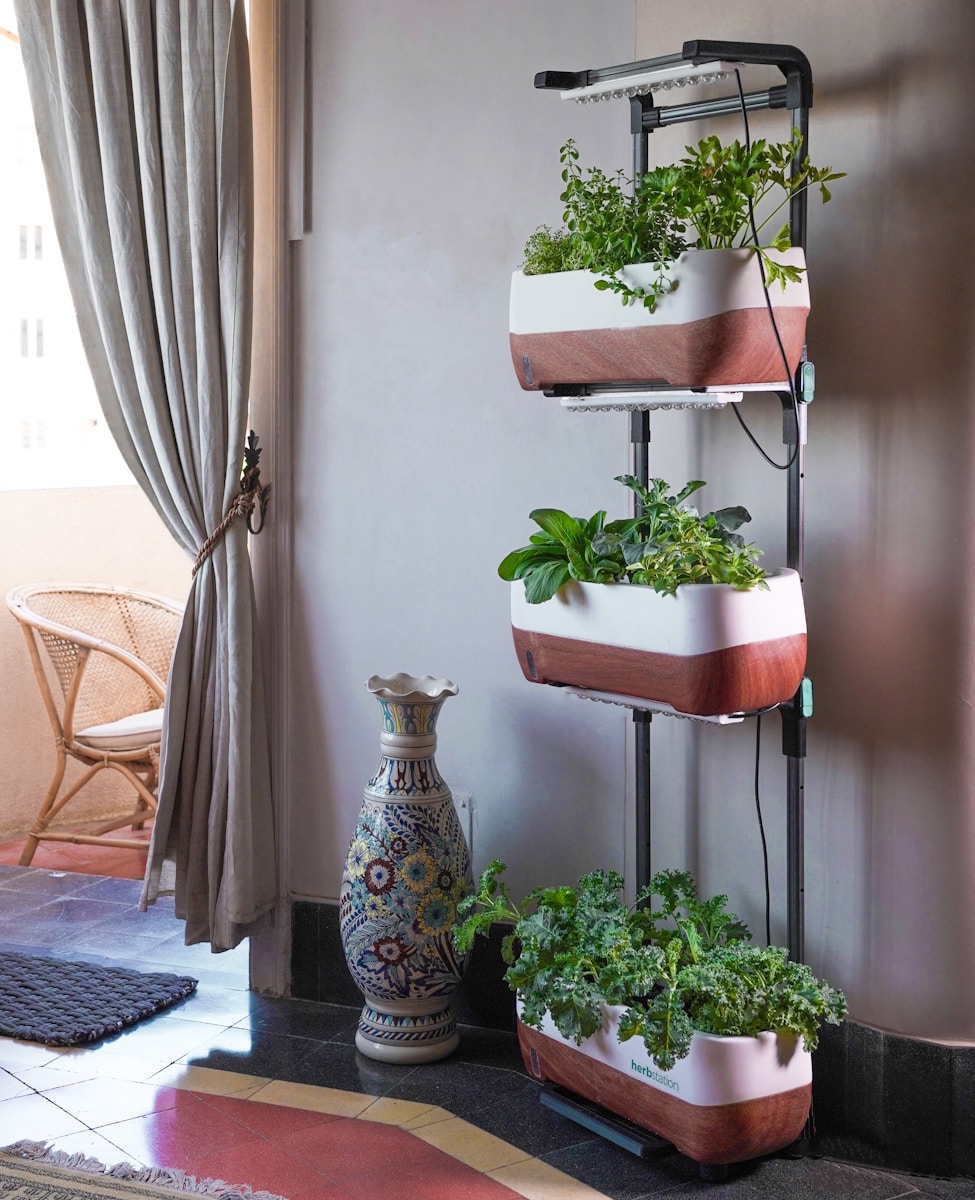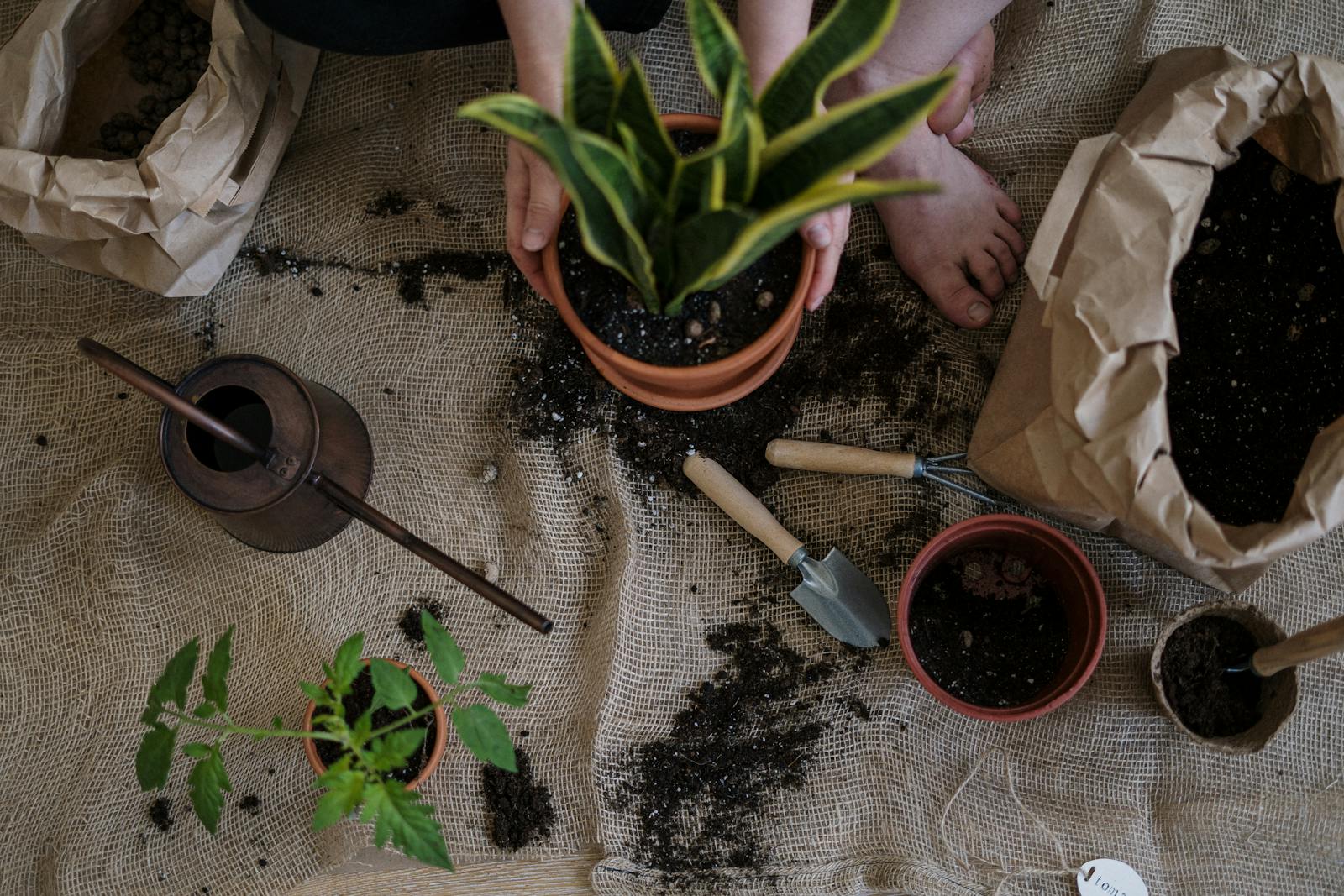The Ultimate Guide to Vertical Gardening for Small Yards and Patios
What Is Vertical Gardening?
Vertical gardening is the practice of growing plants upward rather than outward, using structures like trellises, wall planters, towers, and hanging systems. This method is ideal for small yards and patios where ground space is limited but vertical surfaces offer untapped potential.
From simple DIY shelves to commercial green walls, vertical gardening helps homeowners cultivate more plants in tight spaces. It’s suitable for vegetables, herbs, flowers, and even fruits—turning fences, walls, and railings into lush, living displays. This approach maximizes space, improves air circulation, and adds visual interest while keeping maintenance manageable.
Why Choose Vertical Gardening for Small Spaces?
Vertical gardening offers numerous benefits for compact outdoor areas. First, it dramatically increases growing space without expanding your garden’s footprint. You can grow more plants in the same square footage by moving vertically.
Second, it makes gardening more ergonomic, placing plants at eye level for easy watering, pruning, and harvesting. This reduces strain on your back and knees. Third, it enhances visual appeal by turning dull walls and fences into dynamic green canvases.
Additionally, vertical setups improve sunlight exposure and airflow, reducing the risk of disease and pests. It’s an efficient, beautiful, and smart choice for any small yard or patio.
Choosing the Right Structure for Your Vertical Garden
Vertical gardening thrives on the right framework. Choose a structure that suits your space, sunlight, and plant types. Wall-mounted planters work well on fences or house walls. Freestanding racks, A-frame trellises, and ladder shelves are ideal for patios and yards.
Repurpose items like pallets, rain gutters, or bookshelves for a budget-friendly approach. Hanging baskets and pocket planters are perfect for trailing herbs and flowers. For edibles like cucumbers or tomatoes, use sturdy trellises with support ties.
Select materials like weather-treated wood, powder-coated metal, or heavy-duty plastic to ensure longevity outdoors. The right structure sets the foundation for a thriving vertical garden.
Best Plants for Vertical Gardening
Choose plants based on the structure and growing conditions of your space. Compact herbs like basil, thyme, and chives thrive in wall pockets and shelves. Vining plants such as peas, beans, and cucumbers grow well on trellises, while strawberries and lettuce suit tiered towers or hanging baskets.
Ornamentals like petunias, nasturtiums, and ivy bring color and texture, especially in vertical flower walls. For edible vertical gardens, try dwarf tomatoes, peppers, and leafy greens. Use climbing varieties to train plants upward and save space at ground level.
By selecting the right plants, you ensure a lush, productive, and visually appealing vertical garden setup.
Soil and Watering Tips for Vertical Gardens
Proper soil and watering are key to success in vertical gardening. Use a lightweight, nutrient-rich potting mix that retains moisture but drains well. Avoid garden soil, which is too dense and heavy for vertical containers.
Since vertical gardens dry out quickly, consistent watering is crucial. Install drip irrigation systems or self-watering planters for convenience. Mulch the surface with coconut coir or straw to reduce evaporation and temperature swings.
Water from the top and let gravity help distribute moisture downward. Monitor each tier regularly—upper levels dry out faster. Smart watering ensures uniform growth and healthy roots throughout your vertical setup.
Designing Your Vertical Garden Layout
Design is key when building a successful vertical gardening system. Begin by evaluating your space—note available walls, fence heights, and sunlight patterns. Prioritize accessibility so you can easily water, prune, and harvest from each tier or planter. Use a mix of horizontal and vertical elements to create balance and rhythm in your layout.
Arrange taller plants at the top or back, cascading species along the edges, and compact growers at the bottom. This not only enhances visual interest but also ensures even sunlight exposure. Symmetry, repetition, and color coordination help unify your vertical garden into a beautiful, functional living wall.
Building a DIY Vertical Garden Wall
Creating your own vertical gardening wall is an achievable weekend project. Start with a wooden pallet, modular planter kit, or repurposed shelves. Mount containers or fabric pockets securely, and line them with breathable landscape fabric. Add a drip irrigation line if desired for easy watering.
Fill each container with potting mix and your chosen plants, grouping similar types by watering and sunlight needs. Ensure proper drainage to prevent root rot and overwatering. Hang or anchor your system on a sturdy fence, balcony rail, or house wall.
A DIY garden wall adds style and productivity while transforming underused outdoor space into a lush green retreat.
Maintaining a Vertical Garden Throughout the Seasons
Regular maintenance keeps your vertical gardening system productive and attractive year-round. Prune vining plants to control growth, and deadhead flowers to encourage blooming. Fertilize monthly with a diluted organic solution to replenish nutrients lost to runoff in container soil.
Rotate crops each season to prevent pest buildup and soil fatigue. In colder climates, move portable systems indoors or protect them with fleece or covers. Monitor for pests, especially in dense plantings, and remove dead foliage to improve airflow.
Seasonal care ensures your vertical garden continues to thrive through changing weather, giving you continuous beauty and harvests.
Incorporating Edible Plants into Your Vertical Garden
Edible vertical gardening combines form and function, letting you grow herbs, vegetables, and fruits in compact spaces. Choose crops that climb or trail, such as peas, pole beans, cherry tomatoes, or strawberries. Use shelf-style planters for lettuce, spinach, or arugula, and hang herb pots at eye level for easy picking.
Group plants by watering and light needs for efficiency. Use high-yield, container-friendly varieties to maximize production. Install supports for heavier crops and harvest regularly to keep plants productive. Growing edibles vertically enhances both your garden’s appearance and your kitchen’s freshness, all within a small footprint.
Vertical Gardening for Privacy and Aesthetics
Vertical gardening offers more than just food—it’s also a stylish solution for privacy and visual appeal. Use trellises, plant walls, or bamboo screens with lush climbing plants like clematis, ivy, or honeysuckle to create green dividers between you and neighboring properties.
Incorporate color with flowering vines or variegated foliage, and layer textures to add depth. Frame entryways, seating areas, or patios with vertical greenery to soften hard edges and create an inviting atmosphere. Even a single vertical feature can define outdoor zones while elevating the design of your small yard or patio.
Vertical Gardening for Urban and Rental Spaces
Vertical gardening is ideal for renters and urban dwellers who may not have access to large plots of land. Most systems are modular or portable, making them easy to set up and dismantle without altering permanent structures. Freestanding racks, hanging baskets, or vertical grow towers fit well on balconies and decks. In addition, vertical gardening allows individuals to maximize their growing space while adding aesthetic appeal to their living environment. For those looking to enhance their green thumb in urban settings, there are many vertical gardening tips for cities that can help optimize light exposure and water retention. Embracing local resources, such as community gardening workshops, can also provide valuable insights and support for successful vertical gardening initiatives.
Use lightweight materials and non-invasive installation techniques like over-the-railing planters or adhesive hooks. Select low-maintenance plants suited to your local light conditions. This approach brings greenery into tight quarters and gives renters a flexible, space-saving way to enjoy gardening without compromising on design or function.
Creative DIY Ideas for Vertical Planters
Get inventive with DIY vertical gardening using materials you already have. Repurpose old ladders into tiered herb racks, or stack wooden crates for a rustic garden wall. Hang mason jars on reclaimed boards for a modern take on vertical planting.
Use fabric shoe organizers to grow leafy greens or herbs—just ensure proper drainage. Even rain gutters mounted on fences can house rows of strawberries or lettuce. With a little creativity, you can build a vertical garden that’s budget-friendly, beautiful, and uniquely your own.
DIY vertical projects are perfect for expressing your style while maximizing limited outdoor space.
Integrating Vertical Gardens with Outdoor Living
Vertical gardening can seamlessly blend into your outdoor living design. Frame seating areas with green walls to create cozy, private nooks. Use vines on pergolas or trellises to provide shade and soften sun-drenched patios. Hang herb planters near your grill for easy access during outdoor cooking.
Combine vertical elements with furniture—benches with built-in planters or privacy screens that double as living walls. Add ambient lighting to highlight textures and colors at night. Integrating plants into your decor enhances the sensory experience, making your garden feel like a true extension of your home.
Common Mistakes to Avoid in Vertical Gardening
While vertical gardening is accessible, beginners often overlook critical details. One common mistake is overcrowding—plants need airflow and access to light. Another is inconsistent watering, especially in upper containers that dry out faster.
Using poor-quality soil or ignoring drainage can lead to root rot. Avoid heavy containers that may strain mounting structures, and be mindful of plant selection—ensure they suit your light, climate, and container depth.
By planning ahead and monitoring regularly, you can sidestep these pitfalls and enjoy a thriving vertical garden that’s both productive and visually pleasing.
Final Thoughts: Transforming Small Spaces with Vertical Gardening
Vertical gardening offers a smart, sustainable way to make the most of limited outdoor areas. Whether you’re working with a compact yard, tiny patio, or balcony, going vertical allows you to grow more, beautify your space, and enjoy the many benefits of plants—without needing much ground.
With thoughtful planning, the right structures, and a touch of creativity, your small space can bloom into a lush, functional oasis. From herbs and vegetables to vines and flowers, vertical gardening is a flexible, rewarding solution that brings nature closer to home—no matter how small your space may be.
Frequently Asked Questions
What is vertical gardening and how does it work?
Vertical gardening is a space-saving method of growing plants upward using structures like trellises, wall planters, shelves, or towers. It works by utilizing vertical space—ideal for small yards, patios, and balconies. Plants are arranged in layers or mounted on walls, allowing for better sun exposure, airflow, and accessibility. It reduces soil-borne diseases and optimizes yield in limited areas. From edibles to ornamentals, vertical gardens can be customized with DIY setups or commercial kits, making them a practical and aesthetic solution for urban and small-space gardening enthusiasts.
Which plants grow best in vertical gardens?
The best plants for vertical gardening include compact or vining varieties. Edibles like lettuce, spinach, strawberries, and herbs such as basil, thyme, and mint do well in small planters or wall pockets. Climbing plants like pole beans, peas, and cucumbers thrive on trellises. Ornamental options include ivy, petunias, nasturtiums, and ferns. Choose plants based on sun exposure and vertical structure type. Group those with similar water and light needs to simplify care. By selecting suitable plants, your vertical garden will be more productive and easier to maintain, even in compact outdoor spaces.
Can I build a vertical garden on a rental property?
Yes, vertical gardening is a great option for renters. Use non-invasive and freestanding solutions like ladder shelves, hanging racks, or grow towers that don’t require permanent fixtures. Over-the-railing planters or adhesive hooks can also work without damaging walls or fences. Focus on lightweight containers and portable structures that can be moved easily when relocating. Many DIY vertical garden setups are budget-friendly and reversible, allowing you to enjoy greenery and even grow food without altering your rental space permanently. Just check weight limits and drainage to protect surfaces and structures.
How do I water a vertical garden efficiently?
Efficient watering is key in vertical gardening since containers dry out faster, especially in upper tiers. Use self-watering containers or install drip irrigation systems with timers to deliver consistent moisture. Water early in the day to reduce evaporation and monitor plants regularly—top containers may need more frequent watering than lower ones. Mulching helps retain moisture and prevent soil splash. Group plants with similar water needs together. Proper watering supports root health, reduces stress, and helps maintain lush growth throughout all levels of your vertical garden system.
Do vertical gardens need special soil or fertilizer?
Vertical gardens benefit from lightweight, well-draining potting mixes rather than dense garden soil. A mix containing compost, coconut coir, and perlite retains moisture while allowing airflow. Use organic slow-release fertilizers or compost tea to feed plants, as nutrients leach out faster in containers. Replenish soil annually and refresh top layers as needed. Ensure each tier or container has proper drainage to prevent root rot. Tailoring your soil and feeding plan to the container format supports vibrant, healthy growth in vertical gardens—especially when growing edibles or high-demand crops.
© 2025 GardeningandDecor.com. All rights reserved.



